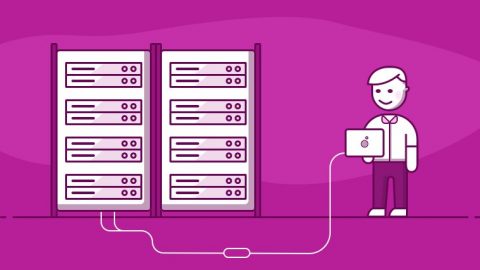My job as CTO of EuroVPS involves long hours in front of many computers and servers, building, designing, maintaining, and fixing a variety of problems across several hundred servers and network devices. I have thousands of files, spreadsheets, and 2 giant MSSQL databases full of so much information about every part and every bit & byte of our servers it could make your head spin.
My first contact with computers was in 1984 when my father purchased a Macintosh 512Kfor his business, but he for whatever reason did not use the machine nearly enough as he could or should have.
Therefore, at the tender age of 6, I took over the Macintosh and started using programs like MacWrite, MacPaint, experimenting with various System disks I got from a neighbor’s MacPlus (1M RAM vs 512K). At one point I almost had System 6 going on the 512K – but this would be impossible without the 512Ke ROMS, long story short, it wasn’t happening.
I used that Macintosh until just about 1993 when it was replaced by an IBM PS/2 Model 8535with a 386SLC-20Mhz processor. This was a fast machine at the time, with an 80MB IBM hard disk, and 8M RAM. It was on this machine that I learned how to use Aldus PageMaker and resulted in my later employment in a DTP arrangement.

The years passed, and Mac’s memory faded away into obscurity, until 1997 when I purchased a PowerMac 6100/60 with the DOS card. I remember how much I enjoyed that machine, as you could easily run MacOS 7.5.5 and Windows 95 on the same hardware, at the same time, at native performance.
The Mac had an actual 486DX2-66 PC with a 32M 72pin SIMM and its own dedicated video – on a PDS card – it was really an amazing setup for the times. The funny thing is that I still have that PowerMac 6100 and it works just as well as it did 15 years ago.
This continued until just about 1999 when Windows NT 4 & subsequently Windows 2000 blew MacOS (Classic) completely out of the water, and that was the end of Macintosh for me – until October ’09 when I accidentally won a bid on eBay for a Quad G5 2.5Ghz machine. I had placed a lowball bid just for fun on a Late 2006 G5 Quad, not expecting at all to win. I won’t say how much, as it’s just too low to post.
After a few months using the MacPro, I’ve found the following replacements for commonly used Windows application.
So now, let’s quickly list out these replacements so those of you sickened by Windows Vista and its .. successor .. (ahem) can plan your migration out:
Small Note: Respect goes out to the people using Linux or FreeBSD on x86 hardware, you guys can stay just as you are.
Replacements for Commonly Used Windows Applications
Needless to say, it’s been a few months, and now I don’t have any PC’s left. At home, at the office, all our staff, even my wife – all are using Macintosh computers. There is not a chance that I would ever use Windows on a Desktop again. There are just too many things to list about why, I stopped using my rather powerful HP xw9300 Dual x DC Opteron 290 w/8GB RAM, and am using Macs everywhere, exclusively.
Sorry Windows, our user relationship on the Desktop is over forever.
My switch to Mac has quadrupled my actual work productivity, which could be measured in servers delivered per day, or problems solved per hour, or issues tracked & resolved per day – everything just happens faster, better, and most important, without fuss.
And also one other last tidbit. SecureCRT, which is seriously one of the best tools I’ve ever used, is going to be released for OS X. Can’t wait!



